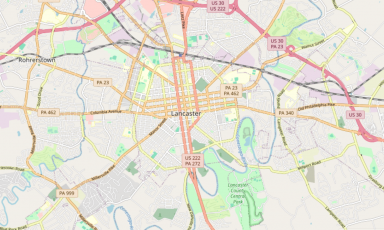Salt Lake County, Utah, United States
The Language Services Collaborative Initiative: a pathway to ensure equitable access to services for all residents

Summary
Salt Lake County commits to enhance access to services for Limited English Proficiency (LEP) Residents through a ‘Language Services Collaborative Initiative’.
The Utah Department of Health has shown that the estimated population of LEP Residents within the county exceeds 200.000, of which 33% state that they speak English less than “very well.” This lack of English proficiency puts these residents at risk to be underserved by county services.
Led by the Mayor's Office of Diversity and Inclusion, the Initiative is a centralized effort to meet the needs of these residents and provides an impetus for different county departments to identify joint challenges and synergies. The ultimate aim of the Initiative is to improve accessibility of services in the county, regardless of English language proficiency.
Primary objectives:
- To align county programs with federal guidelines that prohibit discrimination and that ensure equal access in areas like education, employment, and public services. (e.g. Title VI of the Civil Rights Act of 1964 and the Civil Rights Restoration Act of 1987).
- To ensure that information about county services is accessible, transparent and understandable and in line with e.g. the Federal Plain Writing Act of 2010.
- To promote inclusivity by developing strategies that best serve the linguistic diversity of the county's population.
Impact
This action is expected to have both far-reaching external and internal impacts with the intent of enhancing access of services provided by Salt Lake County (SLCo) for the significant population of Limited English Proficiency (LEP) Residents within the county. An analysis from the Utah Department of Health has shown that the estimated total of these individuals that speak a language other than English within SLCo is 222,284 with 33.29% stating that they speak English less than “very well.” This project targets this underserved population by establishing a centralized and cohesive effort to meet the needs of these individuals that speak a language other than English with a consideration that services ought to be provided regardless of their English proficiency.
These efforts are therefore expected to have a positive, external impact on underserved communities, promoting clear and effective access to government services. Streamlining language access services across county offices will also enhance transparency and efficiency in language services provision given the substantial, quantified need for such services within SLCo. Doing so can assist with increasing civic participation among linguistically diverse communities. This impact may be evaluated by monitoring the number of LEP individuals utilizing language access services and their satisfaction levels.
Internally, facilitating collaboration among county agencies procedures is expected to lead to improved efficiency of service delivery and resource allocation while ensuring compliance with federal guidelines. This may be evaluated by tracking the number of cases or requests regarding language services handled by county agencies within a given timeframe. Improved efficiency should lead to an increase in the number of cases handled without compromising quality and ensuring clarity of resources.
Lessons learned
A few lessons have been learned so far in this project. In particular an emphasis has been placed on the crucial aspect of conducting thorough assessments of the community's language needs which includes which languages are encountered most often to assess priority of service provision. This data is essential for planning effective language access services and allocating resources appropriately. Effective communication with LEP communities is also vital. E nsure that translated materials and interpreting services are of high quality and easily accessible to LEP residents.
Internally, collaboration among county agencies and departments is key to successful implementation. Coordination in this case has helped to ensure consistency in language access procedures alongside a holistic understanding of the variance in need of offices across the county. Understanding and staying up-to-date with federal and state language access regulations is another necessity crucial to identify areas needing improvement and ensure that proper procedures are in place. In regards to engagement with communities, being prepared to adapt as community demographics change or new languages emerge is another critical aspect of this project. Flexibility is key to meeting evolving language access needs.
These lessons have served to guide the county in refining the direction by which to take in improving language service provision. They have ensured that these services remain effective in meeting the needs of its diverse population while adhering to legal requirements. Lastly, the lessons learned have served as a beneficial feedback mechanism for informing decision-making, enhancing performance, and ensuring that over the course of this project SLCo remains adaptable in achieving their goals. They are essential for both our short-term success and long-term sustainability.


